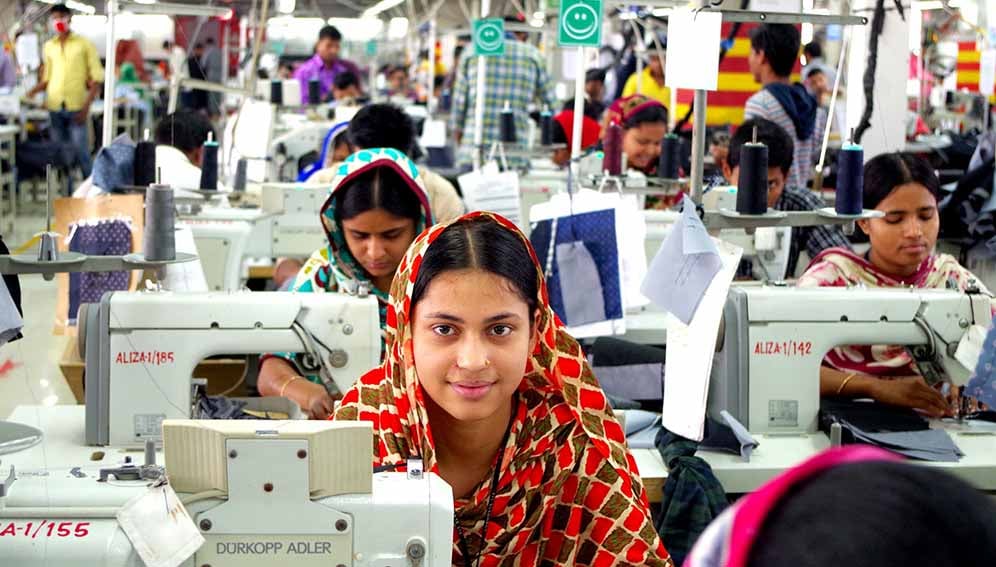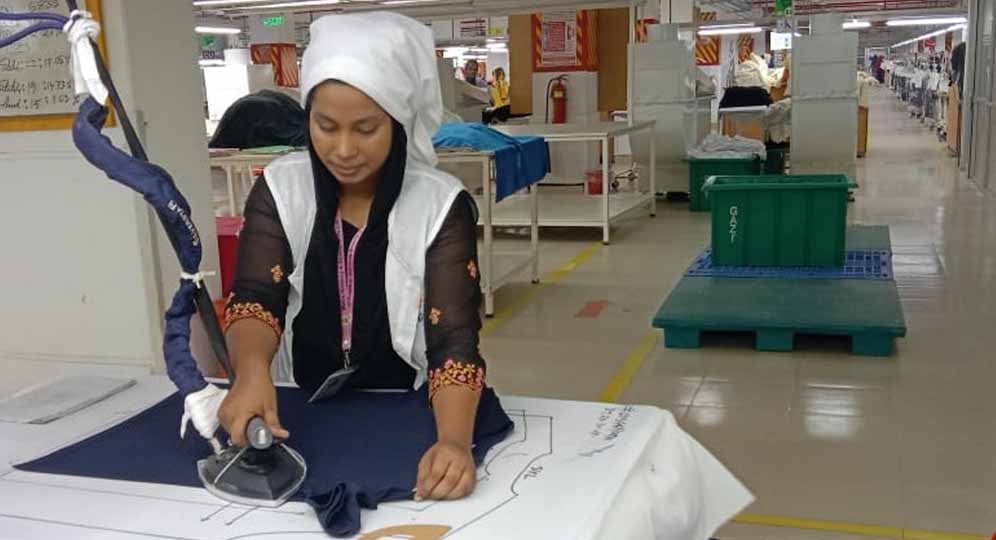24/10/25
Low-cost fixes can ease heat stress for garment workers

By: Neena Bhandari
Send to a friend
The details you provide on this page will not be used to send unsolicited email, and will not be sold to a 3rd party. See privacy policy.
[SYDNEY, SciDev.Net] Simple, low-cost interventions could help reduce heat stress for the millions of people who work in garment factories in Bangladesh, where extreme temperatures make conditions unbearable, according to Australian researchers.
Climate change-led extreme heat and humidity is putting the health and earnings of garment workers in Bangladesh and other low- and middle-income countries at increasing risk, say researchers of a study led by the University of Sydney.
Their study published in The Lancet Planetary Health on Monday (20 October), reveals how simple, affordable, low-carbon interventions could reduce heat stress and protect workers’ productivity and earnings in Bangladesh’s ready-made garment sector.
The industry employs over 4 million people in the country, about 60 per cent of them women, according to the International Labour Organization.
Fahima Akter Beauty, a 24-year-old single mother from Ashulia suburb on the outskirts of Dhaka, has been working for three years in a factory that manufactures knitwear. She feels it is getting hotter and the heat makes her stressed and restless, leading to poor concentration, headaches and drowsiness.
“It affects my productivity,” says Beauty, a participant in a soft skills training programme run by the non-profit CARE Bangladesh, offered to female workers in factories that comply with global working standards.
“I take longer to complete my tasks and I also tend to make mistakes. This impacts my earnings.”
Indoor temperatures in these factories often soar above 35 degrees Celsius. Heat and humidity is further compounded by constant use of heat-generating machinery like irons and steamers, as well as poor ventilation.
Beauty irons stitched clothes, a labour-intensive task in one of the hottest zones of the factory generally assigned to male workers. She drinks water frequently to try and keep herself cool.
Cooling solutions
In the study, researchers found that cooling workers by using fans and drinking water could partly recover the productivity loss of up to 15 per cent caused by heat stress.
In a simulated climate-controlled chamber, replicating the hottest conditions recorded — 40 degrees Celsius and 38 per cent humidity — inside a typical Bangladesh garment factory, researchers conducted 247 trials, involving 42 participants.
They found that using an insulated, reflective roof to reduce indoor temperature by 2.5 degrees Celsius, lowered core body temperature, heart rate, and dehydration risk.
Ollie Jay, the study’s senior author and director of the university’s Heat and Health Research Centre, says: “These workers need immediate affordable cooling solutions to protect them from the growing risk of heat-related illnesses and its long-term health impact.

Olli Jay, director of the Heat and Health Research Centre at the University of Sydney. Copyright: Neena Bhandari / SciDev/Net
“In countries where potable water is scarce, applying unsafe drinking water on the skin surface can help,” he tells SciDev.Net.
“As that water evaporates, it reduces sweating and prevents the person from dehydrating at a faster rate.”
Gender divide
The tests were carried out using an almost equal mix of men and women. Researchers say they found cooling benefits were greater in male participants, highlighting the importance of reconsidering gender-specific tasks and clothing in heat mitigation strategies.
“Ethnicity has a near negligible impact on how we physiologically adapt to heat, but cultural aspects are very important in understanding behavioural adaptation to heat and developing relevant solutions,” adds Jay.
Researchers say the findings are also relevant to other countries with large garment factories, such as India and Vietnam.
James Smallcombe, the study’s lead author and a post-doctoral research fellow at the Heat and Health Research Centre, says: “With air-conditioning being economically and environmentally unsustainable, and Bangladesh’s ready-made garment industry targeting a 30 per cent reduction in greenhouse gas emissions by 2030, these low-resource options could offer a sustainable path for climate adaptation in global supply chains.”
Brad Adams, executive director of Climate Rights International based in Berkeley, California, in the US, says the study highlights the efficacy of low-cost cooling strategies to safeguard worker health as temperatures continue to rise.

Fahima Akter Beauty ironing clothes that have just been stitched in a ready-made garment factory in Dhaka. Credit: CARE Bangladesh
“Its most significant finding is that modified rooftops can substantially reduce heat strain among workers,” he tells SciDev.Net.
“This provides compelling evidence for businesses, especially those in high-income countries, to invest in practical and sustainable cooling interventions in the low-income countries they source from and operate in.”
But he notes that the study has limitations.
“It excluded people with a history of hypertension — representing about a quarter of the Bangladeshi population — as well as those with prior heat-related illness, meaning the results might not fully capture the experiences of the most vulnerable workers,” he said.
He added that the findings that cooling benefits were greater among men highlights the need for additional research on the gendered differences in climate adaptation.
This piece was produced by SciDev.Net’s Asia Pacific desk.


